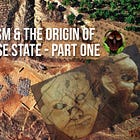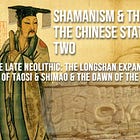Shamanism & the Origin of the Chinese State - Part Three
The arrival of bronze, Erlitou, Erligang and Shang cultures, human sacrifice, divination and kingship
You can read part one and part two of this series on the origin of the Chinese state by clicking on the links below
Keep reading with a 7-day free trial
Subscribe to Grey Goose Chronicles to keep reading this post and get 7 days of free access to the full post archives.



